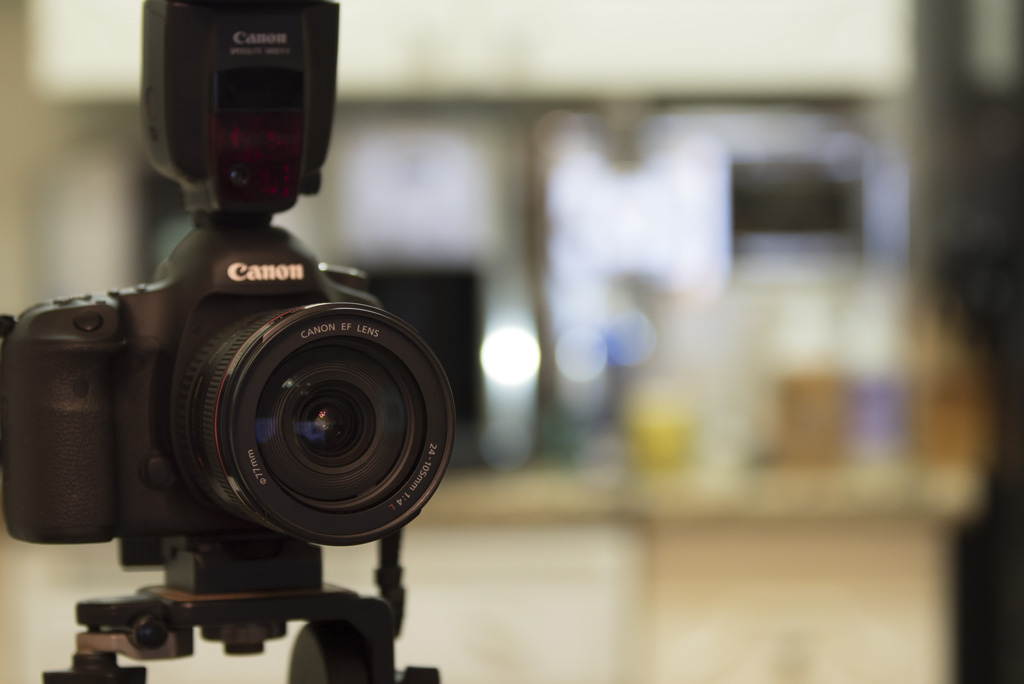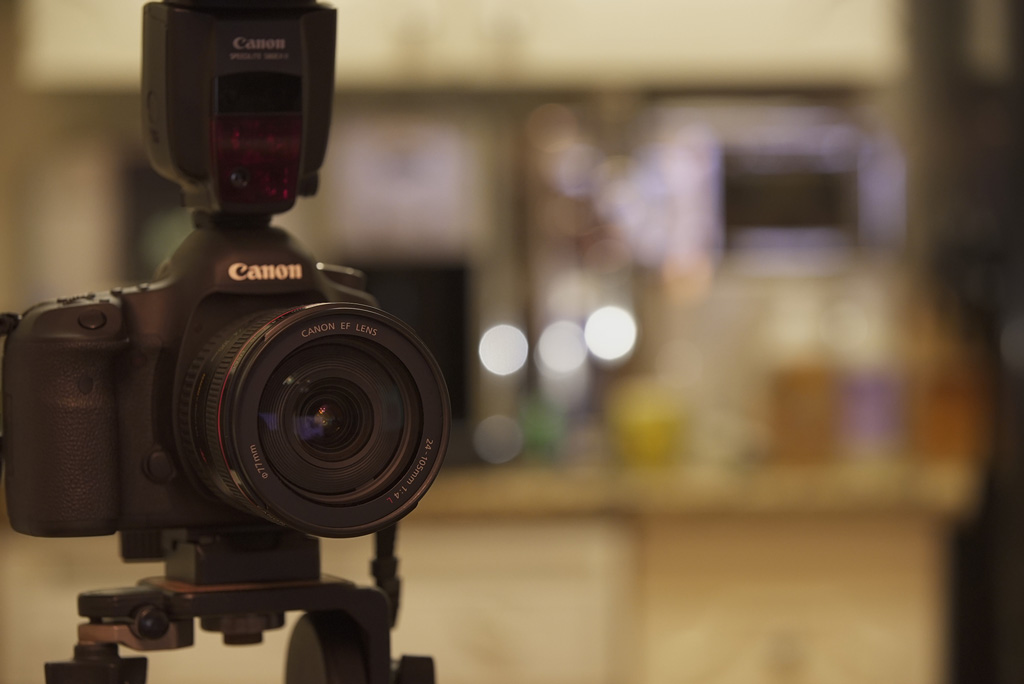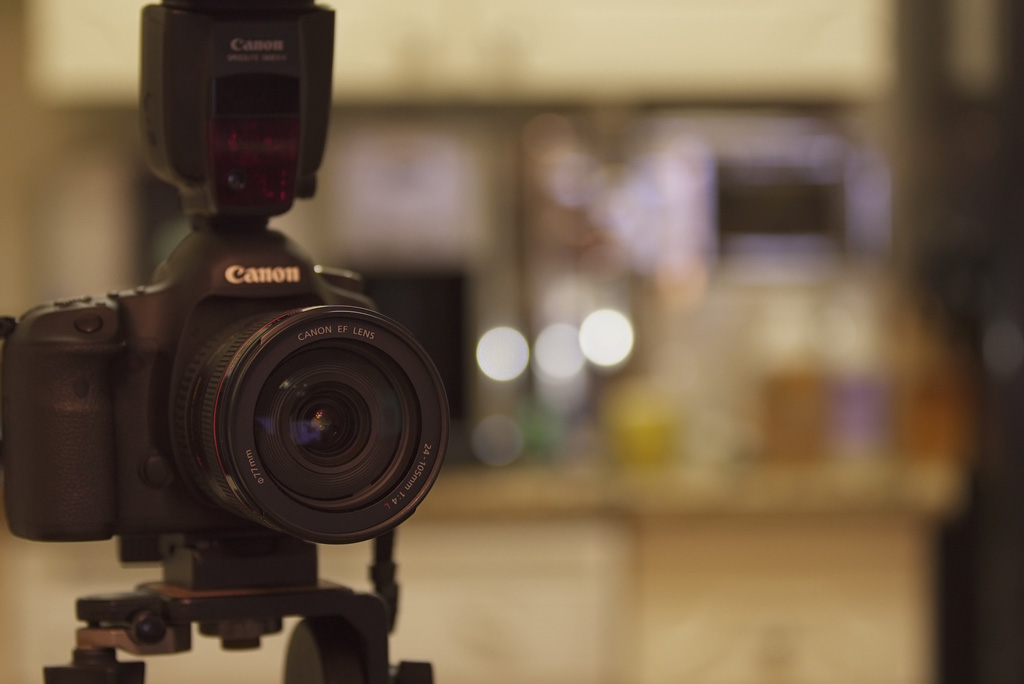Filmic Skin – Get the Best Color and Skintones for your Canon Camera
Amazing Curves Racing – Update 1
The Best Headphone Technology to Date: Electrostatic (Stax SRS-3100 Review)
At CanJam 2017 in LA I listened to the latest and greatest headphones. I was impressed how far dynamic headphones have come along in the Sennheiser HD800S on the high end and Focal Listens for value, and also impressed with the soon to be released excellent bang-for-buck planar magnetic MrSpeakers AEON. The top of the line headphones which sounded the best to me were the electrostatics, including the most expensive, the Sennheiser HE-1. I also listened to the Stax L500 and SR-007MKII briefly at the show on high end amps, however for my quick demo, I didn’t hear much difference, only improved comfort, looks, and build quality. Watching Z Reviews demos and tests on YouTube it became clear that the low-end Stax could rival the higher end electrostatics simply by changing the earpads!
I ordered the Stax SRS-3100 kit directly from Japan (user mmg0g0, Mit): http://www.ebay.com/itm/172577680885 . I ordered on Monday and received them on Friday in LA- pretty quick! Mit advised me to get this converter: https://www.amazon.com/gp/product/B000PC4JL4/, which I purchased and works great so far. I also found this http://www.jameco.com/webapp/wcs/stores/servlet/Product_10001_10001_203036_-1 which is reported to also work OK and I might try it at some point now that I can measure the output of the stock unit and compare with an aftermarket unit to make sure it’s 100% correct. Mit also included a custom note and an ‘old school’ photograph (not a digital print) and crane origami- a nice personal touch.
I compared the new Stax system to the recently acquired Focal Listen using a Sound Devices USBPre2 as the DAC. At first I was very impressed at how well the Focal’s held up to the Stax. I switched back and forth for a while, then went to bed. I read that headphones need some break in time, so I let both headphones run overnight. In the morning I continued to A/B the headphones and again was very impressed that the Focals still sounded very good compared to the Stax. However, after listening to more music with more detail, and especially modern mixes with acoustic and electronic instruments, it was clear the Stax were providing a larger sound stage and a lot more detail. After a while of switching between the headphones the Focals sounded like a smoothing filter was being applied. This is a pleasing, comfortable effect, however also a clear loss of detail and information. It also became clear that the Stax are faster, which is why there is more detail. The concept of faster headphones makes a lot more sense once one listens to electrostatics or planar magnetic headphones for the first time. Electrostatics are faster because the thin film material which moves the air is very, very light and the electrostatic driver system can make the film change direction very quickly with little distortion. Electrostatic headphones are best covered in plastic or similar when not in use to keep dust off the film membranes.
The Stax are open headphones which means I need to turn off the monitor speakers when testing them vs. the Focals which are closed with excellent sound isolation and a bit more bass. In terms of comfort, the Focals are more comfortable on the ears, however there is an interesting mod which I’ll be trying which allows you to use just about any earpads. The earpad mod also increases bass and soundstage / 3D-ness, so it’s a win-win-win. These guys are making 3D printed adapters: https://www.facebook.com/SoCasAudio/ and ship from Denmark. Earpads can be obtained from ebay or Amazon. Based on reviews, the L300’s with the earpad mod become as comfortable as the higher end models and likely produce similar sound. The only thing missing is higher build quality and looks, however for sound mixing and music listening, that’s not really important! For portable listening on a phone or mixing with closed-backs, the MrSpeakers AEON and the Focal Listen are excellent bang-for-buck options.
My April 2017 best-bang-for buck list:
- Electrostatic Modded: Stax SRS-3100 with Earpad Mod (works great!): $700 + $40 (adapter) + (whatever you want to spend on earpads)
- Electrostatic: Stax SRS-3100: $700
- Planar Magnetic: MrSpeakers AEON: $700, preorder price (need a more detailed test/demo, though online reviews echo what I heard at CanJam 2017)
- Dynamic: Focal Listen: $249
The Best Headphones
Headphones are great for intimately listening to music or playing videogames. For those of us working in the media industry, they are extremely useful for creating, recording, and mixing audio.
Audio has been a passion since writing videogames in my 20’s. Creating sound effects and having them come to life in an interactive game is a wonderfully creative experience. At MySpace Music I wrote the real-time DSP software for their online music/singing products. I listen to music ranging from classical, to rock, pop, EDM, new age, and lately spiritual. Recently I’ve gotten back into 3D audio and binaural playback using the new Sennheiser Ambeo 4-channel tetrahedral ambisonic microphone + Zoom F4, processed using Reaper and the Ambisonic Toolkit.
I’ve been using the Sony 7506 for location monitoring when shooting video. They are fairly accurate and flat, lightweight, comfortable, and fold small for travel. When in the studio editing video and mixing audio, I use Tannoy Reveal 501a’s (currently made model is the 502) and either a FocusRite Scarlet 2i2 or Sound Devices USBPre2 for DACs and headphone amps. Previously I had used an RME Fireface 800, however I didn’t need 56 channels and it was far more complex than my needs for mixing (it’s more useful for complex recording tasks). For critical listening, especially when doing HRTF binaural playback, I use Audio Technica ATH-M50’s. The M50’s are truly amazing for the price, I got mine for $109 years ago when the 7506’s were $99. For the $10 difference the quality jump is amazing. Headphones are extremely personal: what works for one person won’t for another. So it’s important to ideally listen to any headphones before purchasing after reviewing what others describe about their performance. Are they flat, U or V shaped (recessed mids or not), bass or treble heavy etc. If purchasing online, make sure the return policy doesn’t have a restocking fee. Amazon will charge return shipping, however it’s worth it to be able to demo gear that is not available locally in the store.
After having upgraded my cameras, lenses, and microphones over the years, I hadn’t upgraded my headphones. Since I’m currently working with new 3D audio projects, I figured it was time to look into the headphone market to see what’s new. First, let me explain why I love the M50’s. When I auditioned them at Guitar Center in Hollywood a few years ago, I had been listening to many headphones, including the 7506’s which I already owned. When I listened to the M50’s, it was like going from SD to 4K for video. Meaning I could hear a tremendous amount of detail I couldn’t hear before. This is not the same as turning up the bass and treble. That would be akin to post sharpening video, where the image does look sharper but there is no more real information, and can start to look bad as artifacts become visible. The last time I had that ‘aha!’ moment was listening to Stax for the first time.
Also in my 20’s, when I was first getting started with sound effects and video games, a friend invited me over to check out his high-end stereo and headphones. I’d never heard anything remotely hi-fi, only Radio Shack level gear. He had the headphones plugged into this impressive looking piece of gear, a Carver Magnetic Field Amplifier. The headphones didn’t look like headphones, they were big and rectangular, and aren’t even called headphones but rather ear speakers, which is accurate. I put them on and he cued up Pink Floyd, Dire Straits, Jimi Hendrix and a bunch of other music we were into back then (still dig it, man, especially compared to what’s released today!). I was speechless. Blown away. Mind blown. Blew my socks off. Whatever end-game emotional superlative you want, I experienced it. I had no idea sound could sound so good. Thus was I introduced to Stax Earspeakers.
Years later I attended a virtual reality event in Mountain View CA at the NASA Ames Research center, in the Hanger One blimp hanger. There Scott Foster from Crystal River Engineering was demonstrating his new invention, the Convolvotron. For the first time it was possible to spatialize sound in 3D and apply an HRTF in real-time. The Convolvotron got position and orientation information from a Polhemus magnetic tracker (today’s trackers have improved considerably). The headphones were Stax, and again, mind blowing quality. Immensely transparent, detailed, and fast, like it was a real soundstage, and you are right there, in person, looking around and hearing things change as you move your head as in real life.
Today I visited CanJam SoCal for the first time at the Marriott in Downtown LA. My goal was to check out the latest technology, including the Audeze LCD-X, HiFiMan HE-1000, Sennheiser HD800 and HD800S, and of course the latest Stax.
I found Stax right away at the HeadAmp booth. First I listened to the SR-507 , connected to a HeadAmp amp. It sounded amazing. Then I listened to the SR-007 MkII and SR-009. I knew I wasn’t going to get the high-end Stax which required big high-end amps, so I only listened briefly. While they might have been a bit more comfortable, I didn’t hear a jump in quality for the brief demo. Like all gear, it’s diminishing returns and it requires more time to see/hear differences in higher end gear. I also listened to the HiFiMan HE-1000 planar magnetic ($2999). Very beautiful design, lightweight, and very comfortable. The sound was excellent, however the Stax just sounds better to me- more effortless detail. The tradeoff with the Stax is you must use a powerful amplifier to drive them- they use a custom connector as well and you can’t drive them with a 1/8″ or 1/4″ plug or use a normal headphone amp.
I spent a bit of time listening to the Ultrasone headphones, they are very beautifully made. Using my iPhone, I listened from entry level to top of the line. I found I liked the first two lower end headphones the best- the Performance 880 ($499) and the Signature Studio ($599). The rep’s name was Michael Prager, and while I was sitting there radio talk show host / Prager University founder Dennis Prager walked up and they both had a laugh they had the same last name (not related). After leaving I felt like the Ultrasone’s were worth a second listen, however I didn’t have time at the end of the day.
Next up was Focal, another company I had not researched. I’d seen the name along with the Elear series in forum posts. I picked up an unassuming pair of headphones with a 1/8″ connector and plugged them into my iPhone. I listened to a few tracks and was amazed with the quality. I had tried a few other headphones from other vendors, and found that the high frequencies were kind of brittle in a lot of their more expensive headphones. Like the sharpening analogy for video mentioned before. The highs were certainly present and somewhat detailed, it’s just that the sound was brittle and a little harsh, like it was mechanically quantized. With these little Focal Listen’s, the sound was quite detailed yet also very smooth in the highs, with no brittle or harsh sound. I was instantly impressed. I asked how much, and was surprised to hear $249. I then tried the higher end Focals, and again wasn’t planning on spending big bucks on anything other than electrostatics, so I didn’t listen very long. In that short listen I was even more impressed with the little Listen’s.
The Audeze booth was very crowded, so I checked out another brand I hadn’t researched, MrSpeakers, which use planar magnetics. They also have very cool, artistic designs, and the headphones are reasonably light and comfortable, with real carbon fiber as well. Again the same story, I preferred their latest entry level headphones, the Aeon for $699 (preorder, afterwards $799). They are smaller and lighter as well vs. their higher end models. MrSpeakers had a prototype electrostatic at the show upstairs, which looked beautiful, however I’m not in the market for $3000 electrostatics which need a massive amp so I didn’t wait to listen to them- the guy listening didn’t look like he was going anywhere for a while.
I finally found an open seat at Audeze and checked out the highly rated LCD-X. I put them on and indeed they are quite heavy compared to everything else I had tried, though still comfortable. I plugged them into my iPhone and listened to some tracks. I then tried the closed back version, the LCD-XC. They told me these headphones sound best when driven by an amp and I believe them. While they sounded pretty good on my iPhone, I wasn’t blown away. I listened a bit more, then paused the track, and walked quickly over to Focal, put on the Listen’s, plugged them into my iPhone, and started the track. Giant smile on my face! I’m sure the LCD-X’s are amazing on a high-end amp, I’m just not going to spend that kind of money on planar magnetics- they’re in the price range of electrostatics, which are clearly the kings, more on that later, for the King of kings.
I listened to the Beyerdynamic flagship, the T1. They were pretty good, similar to the LCD’s, however again for my limited test didn’t blow my socks off (which would have been hard to do since I was wearing sandals). While at the Out of Your Head booth who sell a software tool to provide virtual multichannel audio in headphones, I had listened to a pair of Sennheiser Momentum’s, which sounded really good. Their virtual multichannel demo was also quite impressive. I have a pair of HD580’s, had a lower end HD series in the past, and had demo’d the HD280Pros in the past and didn’t really like any of them. So I thought maybe Sennheiser’s just don’t work for me. I dig their wireless mics and the new Ambeo mic, so I know they make great gear. I was pleasantly surprised that the Momentum’s were light, comfortable, and sounded very good. Again, for me sounding good is lots of detail, flat response (slight V or U shape is OK), accurate bass but not vice-crushing my skull levels, and a creamy smooth high end that stays detailed, without brittleness or harshness. So when I visited the Sennheiser booth I immediately tried the Momentum 2.0. The versions they had were Bluetooth wireless noise cancelling, however I used them in wired mode with noise cancelling on. These new versions sounded great, comfortable and lightweight too. Since a buddy of mine who does audio exclusively full time for video games and film recommended the HD800, I tried them too. Again, I was pleasantly surprised to hear that indeed they sounded pretty excellent, however not any better than any of the other higher end headphones, and not much better than the little Momentums. Again, these demos are only for a few minutes each, so I’m sure the results would be different if using them for hours, or days for that matter. Next I tried the HD800S (S probably stands for smooth), which did exactly what I’m talking about regarding brittleness in the highs: the HD800S is smooth and creamy vs. the HD800 which are a bit brittle in the highs, like many other of the higher end headphones. To me the difference was pretty dramatic- the HD800S was significantly better. I see the HD800 is now available at a discount ($1040) whereas the HD800S is not ($1625). I’d want to demo the HD800S (dynamic) alongside the MrSpeakers Aeons (planar magnetic) and Focal Listens (dynamic with the same creamy smooth highs) before spending that kind of money on dynamic headphones.
I listened to a couple Massdrop rebranded and tweaked headphones, the AKG 7XX and the Fostex TH-X00– both sounded very good- clear, focused, and detailed. I didn’t get much time with them though and they are only available from the Massdrop website: I prefer buying electronics from Amazon and BHPhoto when possible. I’m not in the market for a headphone amp, however Jonathan Little showed me his Little Labs Monotor 2-channel headphone amp ($540) and it sounded great, was very well designed, and with a cool dial to select L/R R/L L+R L R and L-R, useful in mixing and mastering.
I had the mid-low-end narrowed down to the MrSpeakers Aeons, Sennheiser Momentum 2’s, and Focal Listens. Next I checked out the Ossic headphones which have sensors in them to allow real-time sound shaping based on your specific head and ears. They were busy when I stopped by and I only had a short amount of time left before I had to leave, so I didn’t make it back to their booth for a demo. Their tech sounded very cool- look forward to hearing these someday in a 3D audio application.
I made my way upstairs looking for the suite where Stax was located. On the way I looked into a suite and there it was. The distinctive majestic design with tube amps in a single white block of Carrara marble as a frame. Just one guy listening, absolutely motionless and awe-struck, with another patiently waiting behind him. This was the demo for The Most Expensive Headphones in the World, the Sennheiser HE-1 Orpheus with custom tube amp and Class A MOSFET high voltage electrostatic amps built right into the headphones ($55,000). The Sennheiser rep was very cool and we chatted for a bit and then the listener’s time was up and he left. I said I understand you’re completely booked up and was prepared to leave. Surprisingly he offered to let me listen briefly and I said OK I only need a few seconds. The guy waiting who was next asked me to go first, perhaps wanting a longer listen. Grateful for the opportunity I sat down and the rep put on a track I was unfamiliar with, a man singing, with guitar, bass, piano, and sax. What can I say- like Stax only better! More comfortable, more detailed, more real, faster, immensely open, huge soundstage, more transparent. I asked him to quickly flip through a few more tracks, all of which were equally fantastically impressive, then I got up and handed them to the next guy. I’d need a longer listen and more ultra-high-end headphones to make a real comparison and review, however if you want to know if these are indeed the best there is, I can say they are indeed the best I have ever heard! Flawlessly accurate and realistic, and with the right music and more listening time they will be powerful emotion generating machines for the folks who acquire them. I asked if this technology will be trickled down to the consumer space and the Sennheiser rep said yes. So look forward to some amazing new electrostatics from Sennheiser in the future. The King of kings has spoken and he’s electrostatic!
Last but not least, I found the Stax suite. I again listened to the lower-end SR-L300 and SR-L500 through Stax’s amps, and again, to my ears these work really, really well. They aren’t very pretty, don’t seem at all that durable, but they are comfortable and light, and the sound makes me smile every time I listen to them. I had earlier briefly listened to the Koss ESP-950‘s, and to my ears they didn’t really sound much different than some of the planar magnetics. So for whatever reason I prefer the original square Stax design, even over the much more expensive 007 and 009’s. Again, with more time and more material, the 007/009’s might sound better, and again, they require large powerful amps to drive them.
I stopped at El Coyote on my way back to Beverly Hills to get a bite to eat. As I waited for my food I went on Amazon and ordered a pair of Focal Listens for $249 for Monday delivery after reading reviews which echoed what I experienced. Great bang for the buck, tons of detail, and a smooth non-brittle high end. The Sennheiser Momentums still sound interesting for perhaps wireless usage, especially for traveling by air (noise canceling). The MrSpeakers Aeons are unique looking, designed and built in San Diego where I grew up and went to college (UCSD Cognitive Science), and provide excellent sound quality from a planar magnetic at a relatively low cost. The headphones that keep calling me are the Stax. However I don’t really need or want more large clunky gear/boxes in my office. The Stax amps and most other high-end amps are quite large (except the Stax SRM-252S, which may actually be sufficient when listening at lower levels which is all I need). I spoke with the Stax rep from Japan, and he noted there are no California Stax distributors, and recommended purchasing only from HeadAmp or WooAudio vs. Ebay or Amazon (which are apparently individuals buying them in Japan and selling them here). I’m leaning toward the SRS-3100 package (around $700 street), which seems like a great way to get into electrostatics. The SR-L300 sounded great and the SRM-252S is tiny compared to the other amps. The SR-407 and SR-L507 have upgraded components and build materials, however I couldn’t hear a difference in audio quality for my brief demos. I’ll chat with the dealers and get more info, however the SRS-3100 is probably more than sufficient for critical mixing, 3D audio, and music.
Focal Listens for Video Production and Mixing
My first video monitored and mixed with the Focal Listen (multilayer sound effects toward end of video):
These headphones are so well damped it’s like they have active noise cancellation. The sound is detailed, clear, with smooth highs and a wonderful sound. Super comfortable too. The Focal Listens are a fantastic upgrade ($249) from the already excellent Audio Technica ATH-M50 ($149) which is a nice upgrade from the Sony 7506 ($89). If you like the sound of the 7506 and/or ATH-M50, the Listens are worth a demo.
I had not heard of Focal before, and listened to the Listens at CanJam 2017.
Focal Listen page: https://www.focal.com/en/headphones/headphones/listen/listen. Their top of the headphones, the Utopia is $4000: https://www.focal.com/en/headphones/headphones/utopia/utopia
The Listen headphones are designed for mobile, and also have a mic and remote button. The supplied cable is a bit short for production work, so I ordered one of these: https://www.amazon.com/gp/product/B00LM4ON3I/ which works great. A longer cable can be used as the included cable is detachable (the UGreen brand will work as the connector housing is narrow enough).
The last headphones I listened to that got me this excited were Stax (which I finally ordered from Japan after the show).
Written descriptions and a video mixed with them won’t show you how they sound- you’ll need to demo them in person.
These are the kind of headphones that make you want to go through your music collection again, which I’ve been doing when not working on audio-related projects.
A+ bang for buck!
The Full Frame Look is a Myth: Here’s how to Prove it for Yourself
When I viewed Vincent Laforet’s “Reverie”, I was blown away by the look. It seemed unbelievable that an affordable camera could produce such a high-quality, cinematic image. I purchased the Canon 5D Mark II as soon as it was available. When the Canon 5D Mark III was released, which improved video quality over the 5D Mark II, namely the aliasing was eliminated, I sold the 5D Mark II and purchased the 5D Mark III (5D3). The 5D3 was and still is a great still and video camera, however for video it does not produce 1920×1080 resolution, and looks soft. While post-sharpening can improve apparent sharpness and detail, the image is not as good as cameras which produce true 1920x1080p. Canon released the C300, which uses a 4K sensor to produce full 1920×1080 video, however it’s APS-C / Super 35 only. Being a fan of the full frame look, I waited for something else.
Sony released the FS700- also Super 35 only, so more waiting. Metabones released the Speedbooster for Canon EF to Sony E-mount: now the FS700 could provide the full frame look, with a 1.07 crop. I purchased the FS700 and Speedbooster and tested the combo against the 5D3. Sure enough, the bokeh and overall look of the FS700+SB was very similar to the 5D3.
Panasonic released the GH4, which provides 4K internally. It’s a micro four thirds sensor, with a 2.0 crop in 1080p, and a 2.3 crop in 4K. Being a fan of the full frame look, I figured I’d wait until there was a Speedbooster / focal reducer or other camera which could provide 4K with the full frame look. However, I found this page: http://www.josephjamesphotography.com/equivalence/. He explains the simple math required to set up any focal length, aperture, and ISO, to match any size sensor to any other size sensor. For the GH4 I found that I could get equivalent shallow DOF as full frame by getting fast micro four thirds lenses, such as the Voigtlander 25mm F.95. In 4K using the equivalence math, 25*2.3 = 57.5mm, F.95*2.3 = F2.2 full frame equivalent.
When the super low-light A7S was released, I picked one up as it was full frame and I could use my existing full frame Canon and Super 35 Sony lenses. I didn’t think much about the full frame look until the topic came up in a forum. Some folks believe there is something magical, intangible about full frame that creates the full frame look. Let’s review the equivalence math:
To get the full frame camera equivalent to the crop sensor camera:
- Multiply the focal length of the lens by the crop factor
- Multiply the aperture by the crop factor
- Multiply the ISO by the crop factor squared.
You can use this math to do these tests yourself. Let’s do one using the A7S in FF and APS-C (Super 35) crop mode. The crop factor is 1.5. We’ll set up the camera as follows using the Canon 70-200 F2.8L II and the Metabones IV Smart Adapter:
- Super 35 (APS-C mode on): 70mm, F2.8, ISO 800
- Full frame (APS-C mode off): 70mm*1.5 = 105mm, F2.8*1.5 = F4.2, we’ll use F4, ISO 800*(1.5*1.5) = 1800, we’ll use ISO 1600
Shot 1:
Shot 2:
You can do another test that will work with any camera and sensor size to test the effect of crop factor and equivalence. We’ll shoot the same scene at the full resolution of the sensor, twice. One shot will be adjusted so that it can be cropped in post, instead of having the camera do the crop. This will eliminate any potential processing difference between full frame and crop mode, and also allows cameras which don’t provide a crop mode to do the equivalence test. Here are the shots:
Shot 3:
Shot 4:
Can you see any difference? While there are differences, they are minor and related to the fact that even when using a zoom lens, unless we have finer control over aperture and ISO, we can’t set up the cameras to use the 100% equivalence settings. In the first two shots I went one way with the settings, in the second two shots I went the other way. As predicted by the math, there’s no significant difference between full frame and Super 35 when the cameras and lenses are set up for equivalence.
Full frame has the advantage in terms of total light gathering potential, higher potential resolution, and perhaps most important, a wide range of affordable lens options which provide shallow depth of field and pleasing bokeh. The full frame look really means shallow depth of field, which can be achieved with a wide variety of cameras, sensors, and lenses. Since full frame gathers more light, it has a disadvantage vs. crop sensors with diffraction at higher F-stops, which results in a loss of resolution. A full frame sensor has no special properties that give it a unique look any more than a medium format lens does over full frame. As the sensor size increases, the ability to more easily achieve shallow depth of field increases. That’s it!
H.264 vs. ProRes: equivalent quality with 3x smaller files
Canon 5D Mark III 14-bit RAW – The Baby Alexa
Canon 5D Mark III ML 14-bit RAW footage looks great. It provides some of the best color and image quality short of an ARRI Alexa/Amira. Converting the .MLV files to DNG can be pretty fast, however the file sizes are quite large. mlrawviewer provides ProRes 10-bit 444 output which looks great. The resulting files are still very large: ~280Mbps. I did an experiment to see if smaller files with equivalent quality were possible.
FFMPEG Compiled for 10-bit
FFMPEG is a powerful command line tool. It supports many inputs and outputs, and can be compiled to support 10-bits per pixel. Using the 10-bit version of FFMPEG, it’s possible to output 422 10-bit H.264 files that visually match the quality of ProRes 444 10-bit at ~1/3 the file size (round 90Mbps)! It’s also possible to create 444 10-bit H.264 files, which VLC will play, however I have not been able to get an NLE to display them.
Compiling FFMPEG for 10-bit
FFMPEG must be compiled for 10-bit support. For general use, two versions of FFMPEG are needed: one for 8-bit and one for 10-bit. While it’s possible to compile FFMPEG for Windows on Windows, it’s faster and easier to set up and complete the cross-compile on Linux or OSX. Linux is the easiest, and I was able to build 10-bit FFMPEG using this: https://github.com/rdp/ffmpeg-windows-build-helpers. The only snag was the VMWare Ubuntu Linux VM was initially set up with 1GB of RAM. The build failed with an obscure error message. Googling revealed a possible memory problem. After restarting the VM with 4GB of RAM, it finished without issue. I had also started a build on my 2014 MBP (4-core), which was much faster than the 2-core (max limit) VMWare with Linux (on a faster 12-Core MacPro). Here’s the additional info necessary to build for 10-bit H264: http://video.stackexchange.com/questions/13164/encoding-422-in-10-bit-with-libx264.
NLE Support
Premiere Pro CC works great with 10-bit 422 H.264 files, this is the same basic spec as Sony’s XAVC (vs. XAVC-S which is 420 8-bit). Doing an A/B compare against ProRes 444 at 3x the bitrate is visually equivalent. Only when zooming in 400% can the fine noise pattern differences be seen. So far I haven’t be able to create a 10-bit 422 H.264 file that Resolve will display (shows black). I will test with FCPX on OSX shortly.
Ultimate Quality
I’m seeing macroblock edges in the ProRes 444 files from mlrawviewer. I’m curious if the more modern H.264 can produce macroblockless encodes (which can be fully deblocked when decoded). H.264 also supports ALL-I- so perhaps ALL-I H.264 at similar bitrates to ProRes 444 may provide better image quality.
H.264 10-bit 422 Support for mlrawviewer
I’ve looked at the source code for mlrawviewer. It would be fairly straightforward to add support for high-quality H.264.








